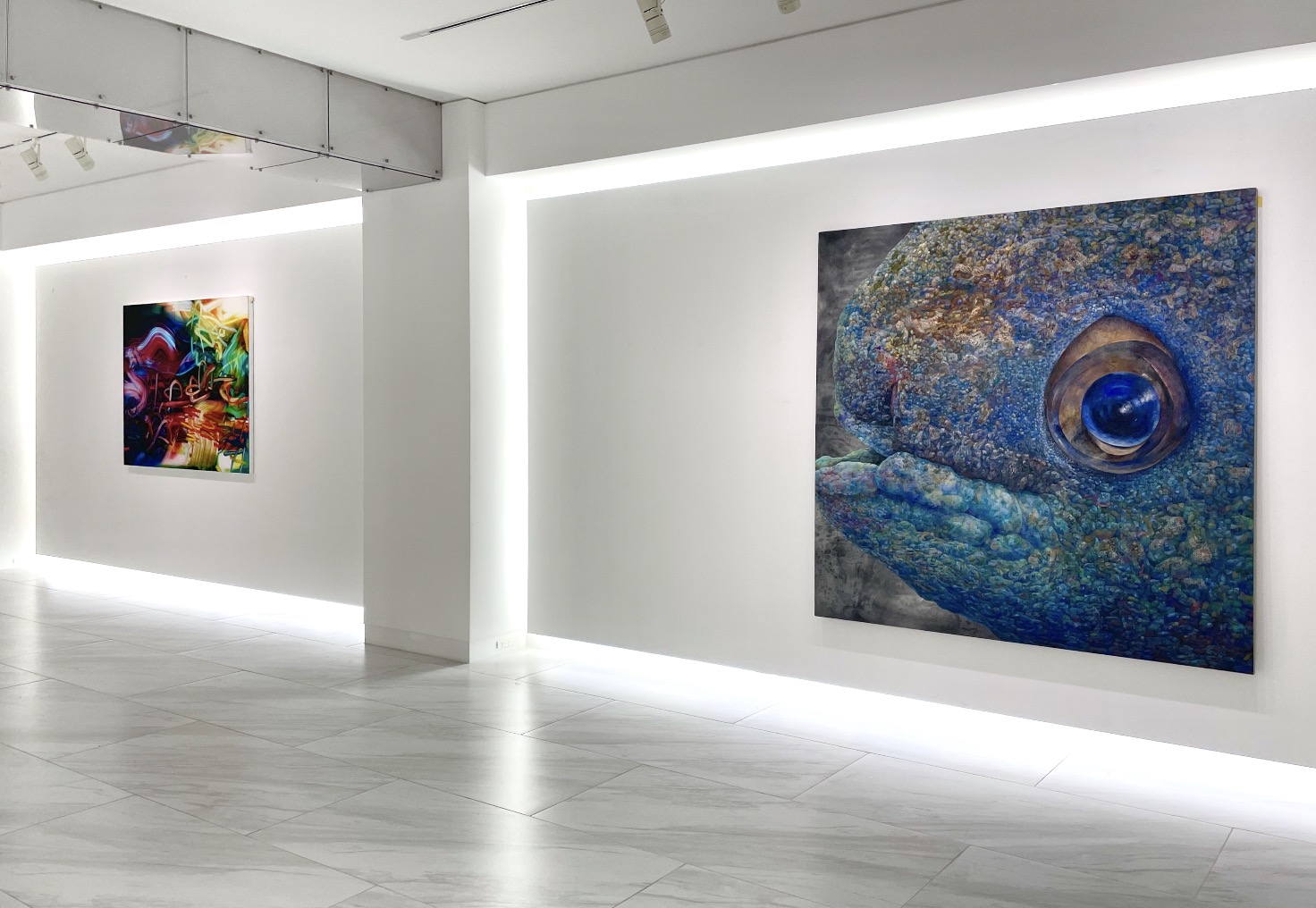

√K Collection 2023→2024
Dates|January 13 (Sat) to February 25 (Sat), 2024
Exhibiting Artists|Shiori Horie, Kiyoshi Hamada, Akihiro Hasegawa, Tomoaki Ichikawa, Reen Barrera, Soh Souen, Ha Haengeun, Soichiro Tomioka, Ruriko Taguchi, Kota Kinutani, Mayo Kobayashi, Sohyun Park and more (in no particular order)
Both, an ode to our past shows and a teaser for our upcoming ones, our very first exhibition of 2024 presents a selection of works by artists we have shown in 2023 and those we will show in 2024.
ARTISTS
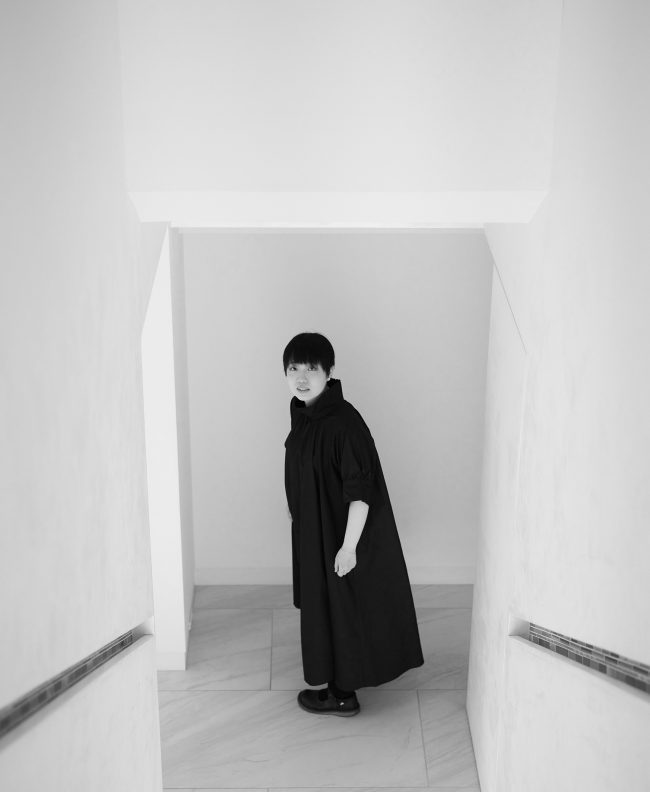
Shiori Horie was born in France in 1992. Horie graduated from the Tama Art University’s Nihonga department in 2014. In the same year, she held her inaugural solo exhibition at Kashima Arts and exhibited her works solo at the gallery’s ART FAIR TOKYO 2015 booth. In 2015, Horie received the Gotoh Cultural Award and was nominated for the 6th Kaii Higashiyama Memorial Award for the Nikkei Nihonga Grand Prize. With a grant from the Gotoh Award, Horie spent a year in Paris in 2016. In 2020, she received the 6TH SETAGAYA ART AWARD “HISHOU” and in March 2021, held a solo exhibition at the Setagaya Museum as a part of the award’s Memorial Exhibitions. In the spring of the same year, Horie held solo shows at √K Contemporary and Kashima Arts as part of the 26th Gotoh Memorial Cultural Award Exhibition: An Overseas Training Program Achievement Showcase. In 2021, Horie received the VOCA Honorable Mention Award of VOCA 2022 and the Takashimaya Culture Foundation’s 32nd Takashimaya Art Award. In 2022, she published the work anthology, “Shiori Horie A Breath Away” (Shogakukan), and held a solo exhibition, “[Associated Exhibition] HORIE Shiori: Toward the Unreachable” at The Museum of Modern Art Kamakura & Hayama KAMAKURA ANNEX. The next year, Horie exhibited her works at the Okawa Museum of Art for a special display as part of the commemorative exhibition, “Fifty Drawings by Shunsuke Matsumoto”. Horie has also published essays in numerous magazines and her works her been featured as covers and illustrations in renowned publications, such as Yoko Hiramatsu’s Chichi no Bisco (Shogakukan, 2021), 5 volumes of the Japanese translation of Jules Verne, The Collected Voyages Extraordinaires (Inscript) and Yoko Tawada’s The Emissary (Kodansha, 2014).
Profile Photo by Shingo Wakagi

Shiori Horie was born in France in 1992. Horie graduated from the Tama Art University’s Nihonga department in 2014. In the same year, she held her inaugural solo exhibition at Kashima Arts and exhibited her works solo at the gallery’s ART FAIR TOKYO 2015 booth. In 2015, Horie received the Gotoh Cultural Award and was nominated for the 6th Kaii Higashiyama Memorial Award for the Nikkei Nihonga Grand Prize. With a grant from the Gotoh Award, Horie spent a year in Paris in 2016. In 2020, she received the 6TH SETAGAYA ART AWARD “HISHOU” and in March 2021, held a solo exhibition at the Setagaya Museum as a part of the award’s Memorial Exhibitions. In the spring of the same year, Horie held solo shows at √K Contemporary and Kashima Arts as part of the 26th Gotoh Memorial Cultural Award Exhibition: An Overseas Training Program Achievement Showcase. In 2021, Horie received the VOCA Honorable Mention Award of VOCA 2022 and the Takashimaya Culture Foundation’s 32nd Takashimaya Art Award. In 2022, she published the work anthology, “Shiori Horie A Breath Away” (Shogakukan), and held a solo exhibition, “[Associated Exhibition] HORIE Shiori: Toward the Unreachable” at The Museum of Modern Art Kamakura & Hayama KAMAKURA ANNEX. The next year, Horie exhibited her works at the Okawa Museum of Art for a special display as part of the commemorative exhibition, “Fifty Drawings by Shunsuke Matsumoto”. Horie has also published essays in numerous magazines and her works her been featured as covers and illustrations in renowned publications, such as Yoko Hiramatsu’s Chichi no Bisco (Shogakukan, 2021), 5 volumes of the Japanese translation of Jules Verne, The Collected Voyages Extraordinaires (Inscript) and Yoko Tawada’s The Emissary (Kodansha, 2014).
Profile Photo by Shingo Wakagi

Akihiro Hasegawa (b. 1997, Mie Prefecture, Japan) is a contemporary artist based in Tokyo, Japan. A successor to a family-run temple, Hasegawa entered the Buddhist priesthood at Saikyo Temple, Mt. Hiei at 10 years old. By 19 years old, he enrolled in the Tokyo University of the Arts, the most prestigious art school in Japan, which, considering its notoriously low acceptance rate, is a rare and striking accomplishment. In 2019, he completed the Buddhist Shidokegyo (Four Preliminary Practices) and, in the following year, began his master’s degree at the Tokyo University of the Arts. Eclectic and elaborate, his works traverse a range of styles, from Byzantinesque oil pastel drawings to realistic portraits and experimental multilayered acrylic plate paintings. Overarching themes of his works include Buddhist imagery, ideas regarding the existence and potential of space and time in painting, and an inherent curiosity and affinity for human subjects. Hasegawa is a recipient of the distinguished Kuma Foundation grant.

Akihiro Hasegawa (b. 1997, Mie Prefecture, Japan) is a contemporary artist based in Tokyo, Japan. A successor to a family-run temple, Hasegawa entered the Buddhist priesthood at Saikyo Temple, Mt. Hiei at 10 years old. By 19 years old, he enrolled in the Tokyo University of the Arts, the most prestigious art school in Japan, which, considering its notoriously low acceptance rate, is a rare and striking accomplishment. In 2019, he completed the Buddhist Shidokegyo (Four Preliminary Practices) and, in the following year, began his master’s degree at the Tokyo University of the Arts. Eclectic and elaborate, his works traverse a range of styles, from Byzantinesque oil pastel drawings to realistic portraits and experimental multilayered acrylic plate paintings. Overarching themes of his works include Buddhist imagery, ideas regarding the existence and potential of space and time in painting, and an inherent curiosity and affinity for human subjects. Hasegawa is a recipient of the distinguished Kuma Foundation grant.
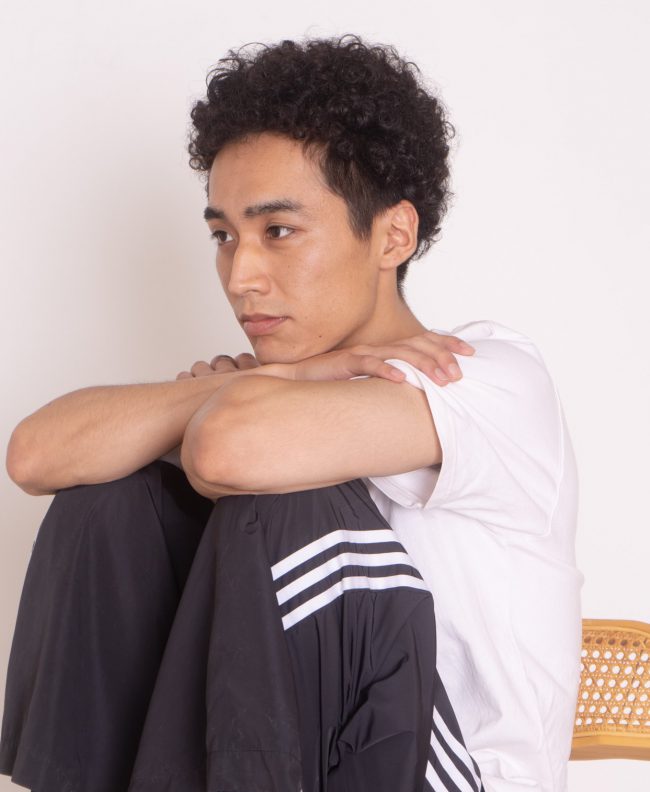
Soh Souen is most recognized for his paintings, installations, and performances that utilize the body as a way to explore the various phenomena of life. From his joint project with Italian (Amsterdam and Bali-based) artist, Sara Milio, which began during COVID-19, to his performance with Agathe Naito’s work at Ginza Hermès Forum, the artist has been widely active, internationally, in a range of fields. Major exhibitions include “WINDS OF ARTIST IN RESIDENCE 2022 Tracing the Boundaries – Stone, Breathing, and Land Reclamation” (Fukuoka Asian Art Museum, Fukuoka, Japan), “It’s Been Breaking, Still Breaking (Yet Not Broken)” (rin art association, Gunma, Japan), “FATHOM – Chiharu Shiota, Sumi Kanazawa and Soh Souen” (Kyoto Seika University Terra-S, Kyoto, Japan, scheduled to open November 2023) and more. In 2022, the artist took part in Fukuoka Asia Art Museum’s residency program by invitation.
1995 Born in Fukuoka, Japan
2019 Graduated from College of Art, Kyoto Seika University

Soh Souen is most recognized for his paintings, installations, and performances that utilize the body as a way to explore the various phenomena of life. From his joint project with Italian (Amsterdam and Bali-based) artist, Sara Milio, which began during COVID-19, to his performance with Agathe Naito’s work at Ginza Hermès Forum, the artist has been widely active, internationally, in a range of fields. Major exhibitions include “WINDS OF ARTIST IN RESIDENCE 2022 Tracing the Boundaries – Stone, Breathing, and Land Reclamation” (Fukuoka Asian Art Museum, Fukuoka, Japan), “It’s Been Breaking, Still Breaking (Yet Not Broken)” (rin art association, Gunma, Japan), “FATHOM – Chiharu Shiota, Sumi Kanazawa and Soh Souen” (Kyoto Seika University Terra-S, Kyoto, Japan, scheduled to open November 2023) and more. In 2022, the artist took part in Fukuoka Asia Art Museum’s residency program by invitation.
1995 Born in Fukuoka, Japan
2019 Graduated from College of Art, Kyoto Seika University
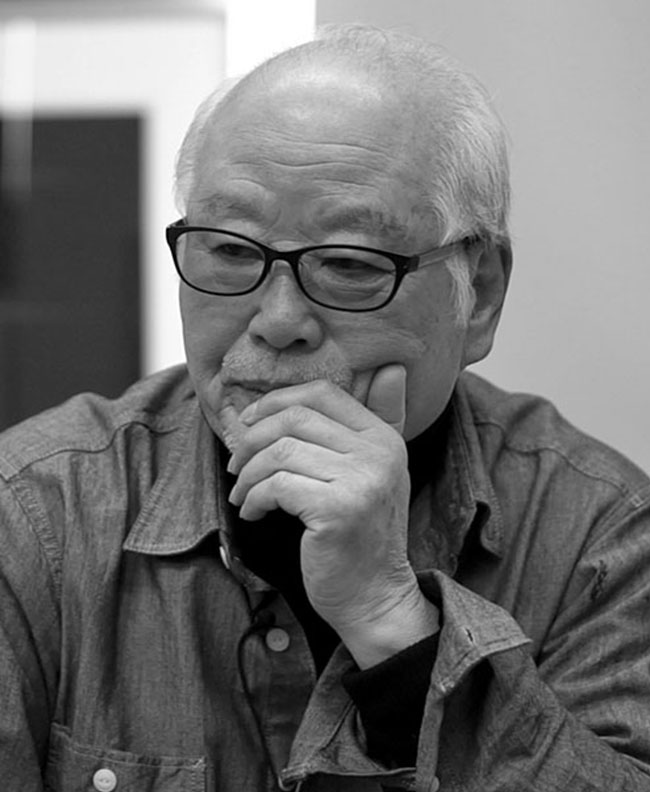

Born 1922 in Takada City (current Joetsu City), Niigata Prefecture. Following graduation from high school, the artist would learn to paint independently whilst working at the Mitsubishi Chemical Corporation’s advertising department. Tomioka would subsequently gain great recognition for his receiving of the 1962 Shin-seisaku Exhibition’s New Art Society Award and the 1963 7th Sao Paulo International Art Bienal’s Museum of Modern Art award. With the support of the Rockefeller Foundation’s international scholarship program, Tomioka moved to New York in 1965 and would spend the next 7 years in the city before his 1972 return to Japan. Following his return, the artist would undergo a pilgrimage around Japan’s snow country while producing more works along the way. The artist would recieve the Seiji Togo Museum Award in 1984 and began his commission to design murals for Japanese Air Force One aircraft operated by the Prime Minister’s Office in 1989. In 1990, the Tomioka White Art Museum opened in Muikamachi (current Minamiuonuma City), Niigata Prefecture. The artist passed away at the age of 72 in 1994.
Born 1922 in Takada City (current Joetsu City), Niigata Prefecture. Following graduation from high school, the artist would learn to paint independently whilst working at the Mitsubishi Chemical Corporation’s advertising department. Tomioka would subsequently gain great recognition for his receiving of the 1962 Shin-seisaku Exhibition’s New Art Society Award and the 1963 7th Sao Paulo International Art Bienal’s Museum of Modern Art award. With the support of the Rockefeller Foundation’s international scholarship program, Tomioka moved to New York in 1965 and would spend the next 7 years in the city before his 1972 return to Japan. Following his return, the artist would undergo a pilgrimage around Japan’s snow country while producing more works along the way. The artist would recieve the Seiji Togo Museum Award in 1984 and began his commission to design murals for Japanese Air Force One aircraft operated by the Prime Minister’s Office in 1989. In 1990, the Tomioka White Art Museum opened in Muikamachi (current Minamiuonuma City), Niigata Prefecture. The artist passed away at the age of 72 in 1994.
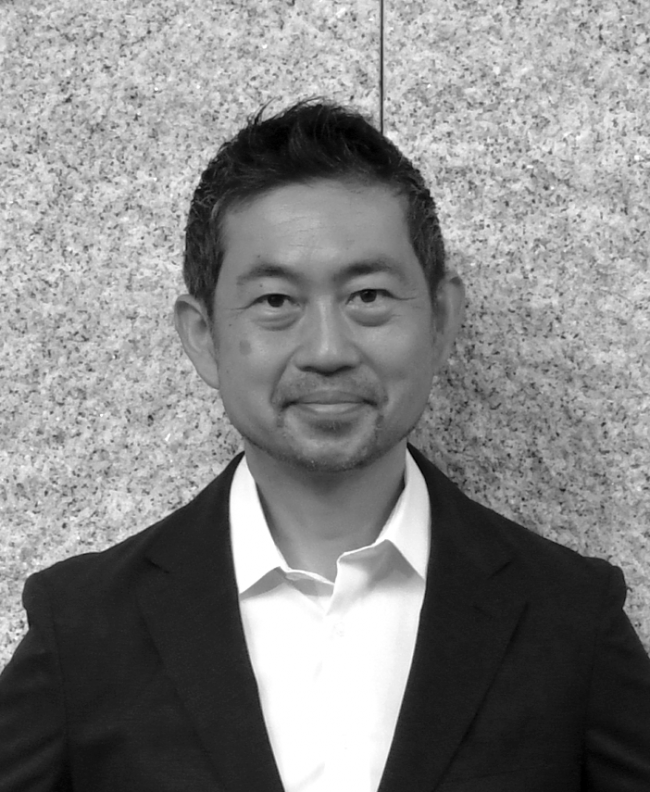
Kota Kinutani was born in 1973 as the eldest son to Japanese painter, Koji Kinutani. He spent his early years in Rome and Venice and, through the influence of post-war sculptor, Yoshitatsu Yanagihara, began pursuing sculpture in 1991. Kinutani graduated from the Nihon University College of Art in sculpture in 1996 and completed his Master’ degree in sculpture at the Tokyo University of the Arts’ Graduate School of Fine Arts in 1998. In 2002, the artist completed his doctoral course in sculpture at the Tokyo University of the Arts’ Graduate School of Fine Arts. Following his doctorate, the artist would emark on a range of pursuits; from researching at the University of São Paulo of Brazil, to teaching at universities such as Nagoya University of Arts, Osaka University of Arts and Tokyo Polytechnic University. In 2008, the artist produced a monument in commemoration of the 100th anniversary of Japanese Immigration to Brazil. In 2019, Kinutani took part in numerous, significant projects worldwide, including the creation of a monument in commemoration of Japanese Emperor Naruhito’s enthronement.

Kota Kinutani was born in 1973 as the eldest son to Japanese painter, Koji Kinutani. He spent his early years in Rome and Venice and, through the influence of post-war sculptor, Yoshitatsu Yanagihara, began pursuing sculpture in 1991. Kinutani graduated from the Nihon University College of Art in sculpture in 1996 and completed his Master’ degree in sculpture at the Tokyo University of the Arts’ Graduate School of Fine Arts in 1998. In 2002, the artist completed his doctoral course in sculpture at the Tokyo University of the Arts’ Graduate School of Fine Arts. Following his doctorate, the artist would emark on a range of pursuits; from researching at the University of São Paulo of Brazil, to teaching at universities such as Nagoya University of Arts, Osaka University of Arts and Tokyo Polytechnic University. In 2008, the artist produced a monument in commemoration of the 100th anniversary of Japanese Immigration to Brazil. In 2019, Kinutani took part in numerous, significant projects worldwide, including the creation of a monument in commemoration of Japanese Emperor Naruhito’s enthronement.
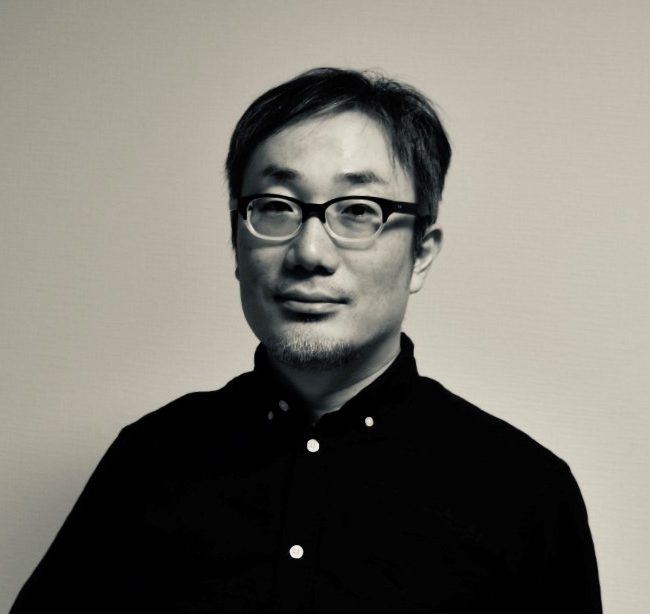
1977: Born in Chiba, Japan.
2002 BA in Oil Painting, Tokyo University of the Arts
2004: MA in Oil Painting, Tokyo University of the Arts
The painter and self-taught sculptor, Tomoaki Ichikawa is best known for his various, original paintings and wooden sculptures of his very own kaijin (monster) and animal characters. Amongst many solo exhibitions, Ichikawa has illustrated the beloved children’s book series, Oroshite Kudasai and Occult Tantei Yoshida no Jitsuwa Kaidan.

1977: Born in Chiba, Japan.
2002 BA in Oil Painting, Tokyo University of the Arts
2004: MA in Oil Painting, Tokyo University of the Arts
The painter and self-taught sculptor, Tomoaki Ichikawa is best known for his various, original paintings and wooden sculptures of his very own kaijin (monster) and animal characters. Amongst many solo exhibitions, Ichikawa has illustrated the beloved children’s book series, Oroshite Kudasai and Occult Tantei Yoshida no Jitsuwa Kaidan.
Currently based in Tokyo, Ruriko Taguchi was born in 1978, in Nagoya of Aichi Prefecture.Taguchi took up photography in 2003 through self-study and, after winning the Fuji Photo Salon New Face Prize in the very same year, began her career as a professional photographer.
Whilst working as a photographer for the music and magazine industry, she has consistently produced works that focused on female subjects, frequently exhibiting her photographs in various exhibitions and publications.
Key works include “Keigai Doboku” (Bare Forms) (2010–), a portrait series of women’s backs, “SCAPE” (2016–), a series of nudes reminiscent of landscapes, “KIYOKO” (2017–), portraits documenting her grandmother; and “CUT OFF” (2020), the artist’s inaugural series of nude self-portraits.
Taguchi is a member of the Japan Professional Photographers Society and the Japan Stage Photographers Society.
Currently based in Tokyo, Ruriko Taguchi was born in 1978, in Nagoya of Aichi Prefecture.Taguchi took up photography in 2003 through self-study and, after winning the Fuji Photo Salon New Face Prize in the very same year, began her career as a professional photographer.
Whilst working as a photographer for the music and magazine industry, she has consistently produced works that focused on female subjects, frequently exhibiting her photographs in various exhibitions and publications.
Key works include “Keigai Doboku” (Bare Forms) (2010–), a portrait series of women’s backs, “SCAPE” (2016–), a series of nudes reminiscent of landscapes, “KIYOKO” (2017–), portraits documenting her grandmother; and “CUT OFF” (2020), the artist’s inaugural series of nude self-portraits.
Taguchi is a member of the Japan Professional Photographers Society and the Japan Stage Photographers Society.
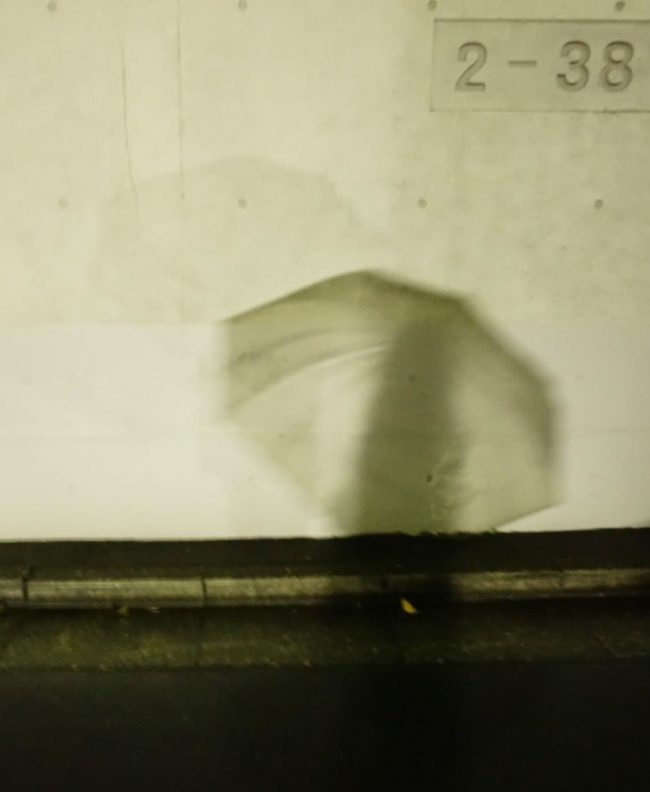
Based in France and Seoul, Korea.
Park’s works focus on ideas of geographical displacement and, more precisely, on how displacement concerns ideas of territory. Drawing from personal experiences, the imagery of Park’s playful and symbolically potent works is inspired by travel, daily encounters, historical events, and other territorially related experiences that touch on issues regarding memory, history, place, time, and vanity. Park has participated in several exhibitions across Europe, Japan, and Korea.

Based in France and Seoul, Korea.
Park’s works focus on ideas of geographical displacement and, more precisely, on how displacement concerns ideas of territory. Drawing from personal experiences, the imagery of Park’s playful and symbolically potent works is inspired by travel, daily encounters, historical events, and other territorially related experiences that touch on issues regarding memory, history, place, time, and vanity. Park has participated in several exhibitions across Europe, Japan, and Korea.
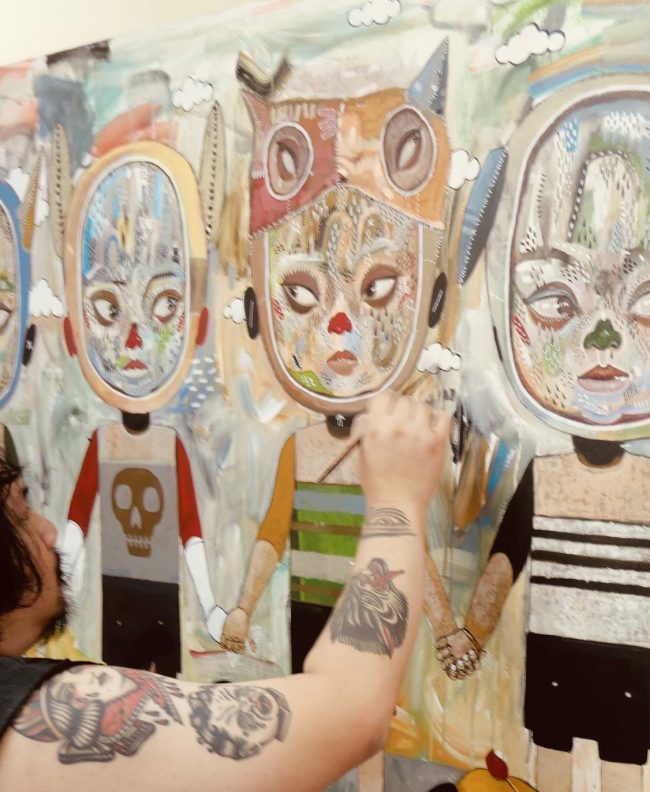
Reen Barrera was born in Paris, France, and raised in the Philippines. As a child, the artist would repair wood carvings in church and began collecting wood scraps to make toys. Barrera would subsequently begin to collect various found materials, such as cardboard and paper, to create his own toys and figurines. This experience would later prove crucial to his later artistic career. His works often reference childhood memories, vernacular phrases, and streetscapes and are characterized by their charming, “outsider art” aesthetic. In recent years, the artist has presented his works at solo and group exhibitions in museums and galleries throughout Europe, the United States, and Asia.

Reen Barrera was born in Paris, France, and raised in the Philippines. As a child, the artist would repair wood carvings in church and began collecting wood scraps to make toys. Barrera would subsequently begin to collect various found materials, such as cardboard and paper, to create his own toys and figurines. This experience would later prove crucial to his later artistic career. His works often reference childhood memories, vernacular phrases, and streetscapes and are characterized by their charming, “outsider art” aesthetic. In recent years, the artist has presented his works at solo and group exhibitions in museums and galleries throughout Europe, the United States, and Asia.
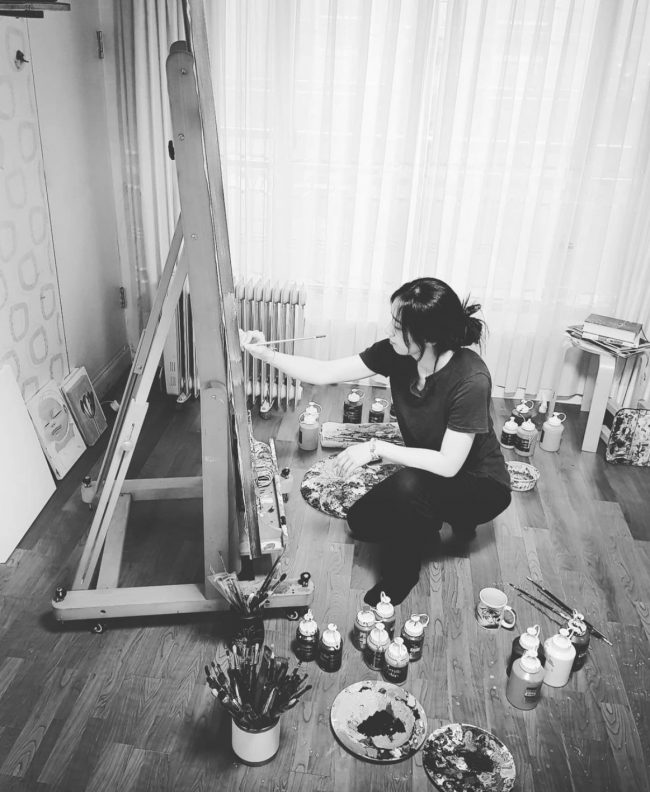
Ha Haengeun (b. 1985) is a painter based in Seoul, South Korea. Ha majored in art at Hongik University, where she indulged in Oriental painting, Oriental philosophy, Zen, and Indian mysticism. and had an interest in art from an early age. Her works, derived from her curiosity and interest in self-identity, present stories of nature, humanity, art, and everyday life through her canvases.
Simultaneously a baby, a girl, and an elderly woman, her figures reveal the circle of life as a single figure. Deviating from ideas of beauty, these figures present a certain freedom that allows for youth and age to coexist within one figure. By presenting two, supposedly, disparate notions as one, Ha’s works offer a sense of harmony. Inspired by a personal experience, Ha’s reinterpretation of death and birth, began when she looked at a newborn and was reminded of an old man. Through this, the artist felt that the newborn was in a state of freedom, and in contact with an unknown boundary. Her works, while also based on reality, draw and present motifs from classical art.
Ha has exhibited her works in various countries, from Korea to Hong Kong, Taiwan, Singapore, Indonesia, Austria, Germany, Spain, France, and more. Future exhibitions are also scheduled to be held in various venues worldwide.

Ha Haengeun (b. 1985) is a painter based in Seoul, South Korea. Ha majored in art at Hongik University, where she indulged in Oriental painting, Oriental philosophy, Zen, and Indian mysticism. and had an interest in art from an early age. Her works, derived from her curiosity and interest in self-identity, present stories of nature, humanity, art, and everyday life through her canvases.
Simultaneously a baby, a girl, and an elderly woman, her figures reveal the circle of life as a single figure. Deviating from ideas of beauty, these figures present a certain freedom that allows for youth and age to coexist within one figure. By presenting two, supposedly, disparate notions as one, Ha’s works offer a sense of harmony. Inspired by a personal experience, Ha’s reinterpretation of death and birth, began when she looked at a newborn and was reminded of an old man. Through this, the artist felt that the newborn was in a state of freedom, and in contact with an unknown boundary. Her works, while also based on reality, draw and present motifs from classical art.
Ha has exhibited her works in various countries, from Korea to Hong Kong, Taiwan, Singapore, Indonesia, Austria, Germany, Spain, France, and more. Future exhibitions are also scheduled to be held in various venues worldwide.
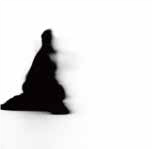
Mayo Kobayashi was born in 1992, in Nagano Prefecture. From an early age, the artist would train in classical ballet and explore various dance styles such as street dance. After acquiring a master’s degree in clinical psychology, Kobayashi worked as a clinical psychologist in a psychiatric hospital and high school. Eventually, her creative urge grew stronger, and left her profession to pursue an artistic career.
Exploring the indescribable sensations that arise deep within, such as the spaces depicted by improvisational dancers and the flow of inner bodily sensations, she focuses on serendipitous phenomena captured through various mediums.

Mayo Kobayashi was born in 1992, in Nagano Prefecture. From an early age, the artist would train in classical ballet and explore various dance styles such as street dance. After acquiring a master’s degree in clinical psychology, Kobayashi worked as a clinical psychologist in a psychiatric hospital and high school. Eventually, her creative urge grew stronger, and left her profession to pursue an artistic career.
Exploring the indescribable sensations that arise deep within, such as the spaces depicted by improvisational dancers and the flow of inner bodily sensations, she focuses on serendipitous phenomena captured through various mediums.

